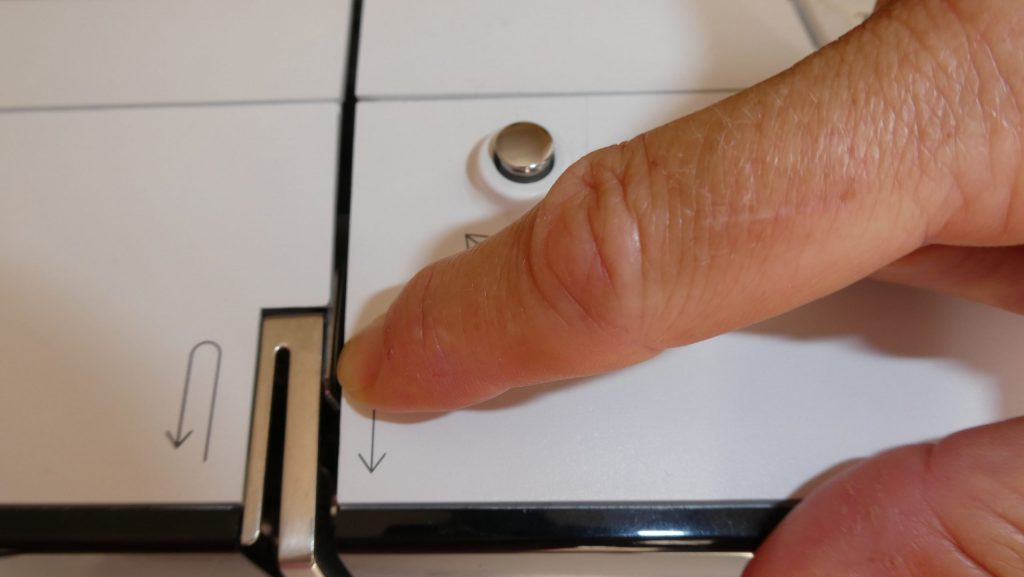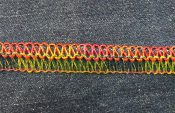Right now, many hobby sewists are sitting at their sewing machines, diligently making face masks.
In some countries wearing a mask is recommended; in other countries it is required. Since approved protective masks are rare, self-made face masks are a good alternative. All around the world people are sewing like there’s no tomorrow – which, of course, makes us extremely happy.
Dear friends who are sewing masks yourselves – please, no matter what, keep in mind our general guidelines for sewing and wearing the self-made face masks you find here: Sewing Self-Made Face Masks – Everything You Need to Know.
You can find additional practical tips in the article written by my colleague Sarah: Sewing Tips from the BERNINA Education Team.
Instructions for sewing self-made face masks with patterns and tutorials can be found here in the overview: Sewing Self-Made Face Masks – Instructions, Patterns, Tutorials.
Tips for a Successful Start
When a lot of people do a lot of sewing, it is inevitable that questions will arise. I would like to answer a few of those below. Hopefully I can teach you a few tricks and provide you with helpful tips for sewing in general or using a sewing machine, so that you can get off to a good start on your sewing project.
For instance, when sewing your mask, do you have the material with the insert and the elastic band under the presser foot, but they do not transport correctly when you start sewing? Or do you want to sew together both ends of a narrow elastic band and the elastic band gets pulled downwards to the hook area, i.e. the bobbin case? In many forums and Facebook groups, I keep reading that the machine “eats” material.
Here I have gathered a few tips on how you can avoid this:
Tips to Prevent Your Machine from “Eating the Material”
Tip 1: Thread Properly
First of all, it is extremely important that you properly thread the machine.
I know this sounds a bit banal and many will ask what threading has to do with starting to sew. Simple: The upper thread must lie between the tension disks located on the top side of the sewing machine:

If it is not positioned there, it will not have any tension, and the upper thread will be pulled under with the very first stitch.
If the material is also not correctly situated above the hole in the stitchplate but is instead placed right before it, this can also cause the start of the material to be pulled downwards.
Above all, if the upper thread breaks while sewing and must be re-threaded, you can easily forget to lift the presser foot. Only when the presser foot is lifted are the tension disks open and the upper thread can lie in between!
See how to properly thread a BERNINA here:
You can find threading videos for all of our modern sewing machine series on the internet, either in the respective product area on our website or on our YouTube channel.
Tip 2: Covering the Stitch Hole
When starting to sew, the fabric edge must cover the hole in the stitch plate.
If the material does not cover the hole or only partially covers it, the material will be pulled below with the first downward movement of the needle; or, as many people say, “the machine eats the material”. It actually makes sense, right?
Did you know that there is an extra marking on the stitch plate just for this purpose?

See how to read and use this marking in this video:
Sometimes, especially when working with thin fabric, I start off with approximately 1 cm of material and then sew back towards the edge. This has the advantage of securing the start of the seam at the same time.
Tip 3: Using Straight Stitch Plates
When working with thin or elastic materials or even a narrow elastic band, it helps to use the straight stitch plate and the CutWork stitch plate along with a straight stitch presser foot (such as the Jeans foot #8). The notch in the stitch plate as well as in the foot are both narrow, which prevents the material from being pulled under. This video nicely shows how this works:
Tip 4: Height compensation tool
To ensure that the fabric is well transported right from the start, I often use the height compensation tool. This is the small plastic plate with different heights which is included in the delivery. Sarah has shown it in her article.
For example, if I have several layers of fabric, I put 2-3 layers underneath, if it is a thin fabric, one layer is enough. In this way I help my feed dog to transport the fabric correctly immediately when I start sewing. Just try it now, it really works great!
You can find more information about this practical little helper in the manual of your sewing machine. Here, for example, is the manual for the BERNINA 335.
Tip 5: Pay Attention to the Needle/Thread/Material Relationship!
Last but not least, I would like to note that the correct needle/thread/material ratio must be maintained.
For thin fabric, a size 70 needle is sufficient; thicker material can tolerate a size 90 needle. And, of course, make sure that quality thread is being used.
In this video you can see how the needle/thread/material ratio is determined:
Hopefully you will get off to a good start and prevent your machine from “Eating the Material”.
I hope that I was able to give you a few useful tips, and that you have a lot of fun sewing! Of course, the guidelines above don’t just apply to those currently making face masks, but rather to sewing in general.
Stop by the blog regularly. In addition to sewing instructions for self-made face masks, you can find many different instructions for creative projects. Patchworkers as well as embroidery enthusiasts and fashionistas will get their money’s worth.
Also, in the near future I will be showing you what to do with birds’ nests of thread and how to avoid this problem – so that sewing those masks continues to be fun and your production can run at full speed.
All the best,
Mirjam
 BERNINA Corporate Blog -
BERNINA Corporate Blog -



I was taught in my grade seven sewing class to hold onto the upper and lower threads while the machine makes the first stitches, so that the threads and material don’t disappear into the machine. I teach this to my own students now, and it always works!
Dear Jean,
it is certainly not wrong to hold the threads slightly when beginning to sew.
Best regards
Mirjam
Good advice! Thanks.